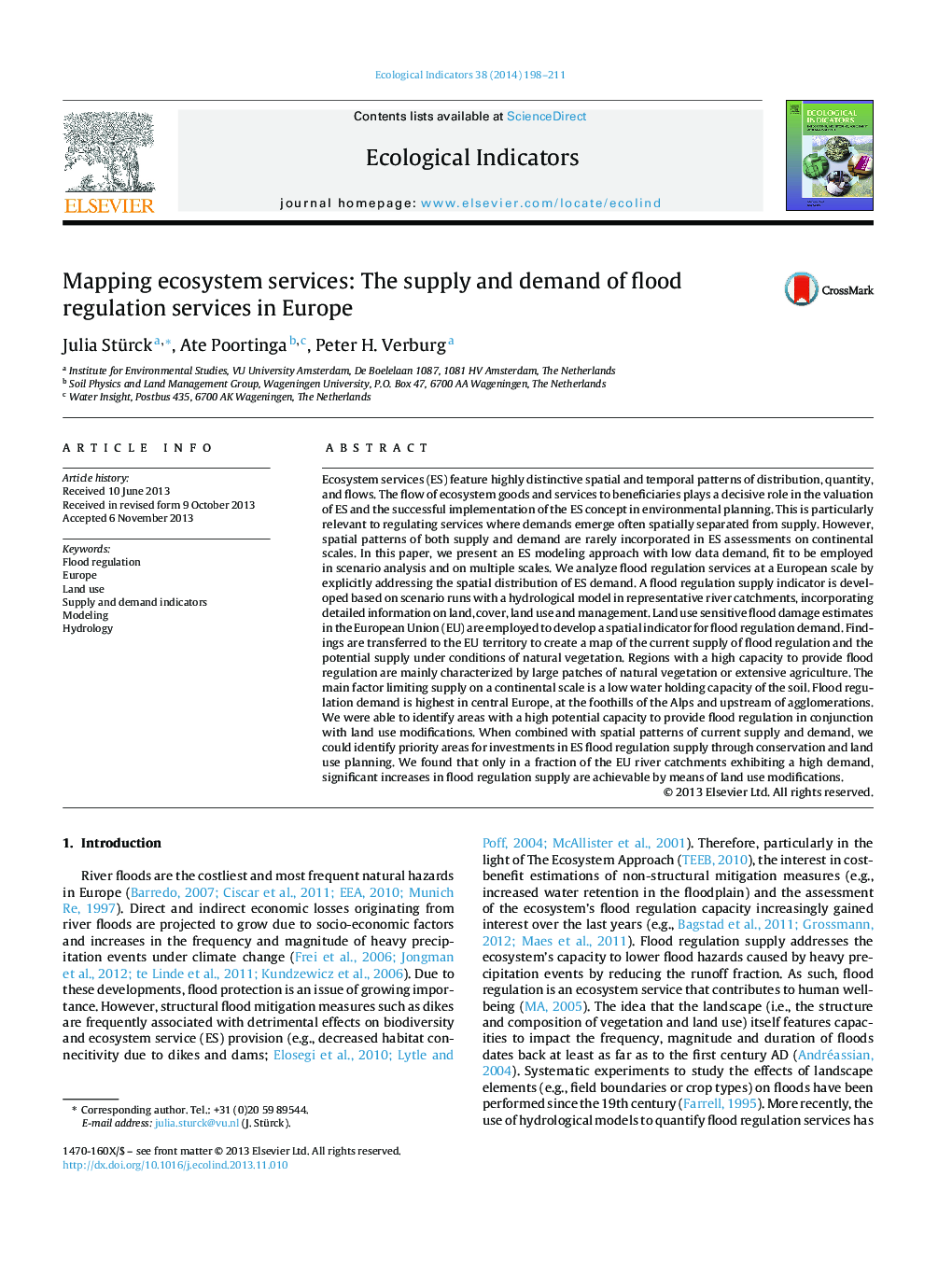| Article ID | Journal | Published Year | Pages | File Type |
|---|---|---|---|---|
| 6295186 | Ecological Indicators | 2014 | 14 Pages |
Abstract
Ecosystem services (ES) feature highly distinctive spatial and temporal patterns of distribution, quantity, and flows. The flow of ecosystem goods and services to beneficiaries plays a decisive role in the valuation of ES and the successful implementation of the ES concept in environmental planning. This is particularly relevant to regulating services where demands emerge often spatially separated from supply. However, spatial patterns of both supply and demand are rarely incorporated in ES assessments on continental scales. In this paper, we present an ES modeling approach with low data demand, fit to be employed in scenario analysis and on multiple scales. We analyze flood regulation services at a European scale by explicitly addressing the spatial distribution of ES demand. A flood regulation supply indicator is developed based on scenario runs with a hydrological model in representative river catchments, incorporating detailed information on land, cover, land use and management. Land use sensitive flood damage estimates in the European Union (EU) are employed to develop a spatial indicator for flood regulation demand. Findings are transferred to the EU territory to create a map of the current supply of flood regulation and the potential supply under conditions of natural vegetation. Regions with a high capacity to provide flood regulation are mainly characterized by large patches of natural vegetation or extensive agriculture. The main factor limiting supply on a continental scale is a low water holding capacity of the soil. Flood regulation demand is highest in central Europe, at the foothills of the Alps and upstream of agglomerations. We were able to identify areas with a high potential capacity to provide flood regulation in conjunction with land use modifications. When combined with spatial patterns of current supply and demand, we could identify priority areas for investments in ES flood regulation supply through conservation and land use planning. We found that only in a fraction of the EU river catchments exhibiting a high demand, significant increases in flood regulation supply are achievable by means of land use modifications.
Related Topics
Life Sciences
Agricultural and Biological Sciences
Ecology, Evolution, Behavior and Systematics
Authors
Julia Stürck, Ate Poortinga, Peter H. Verburg,
